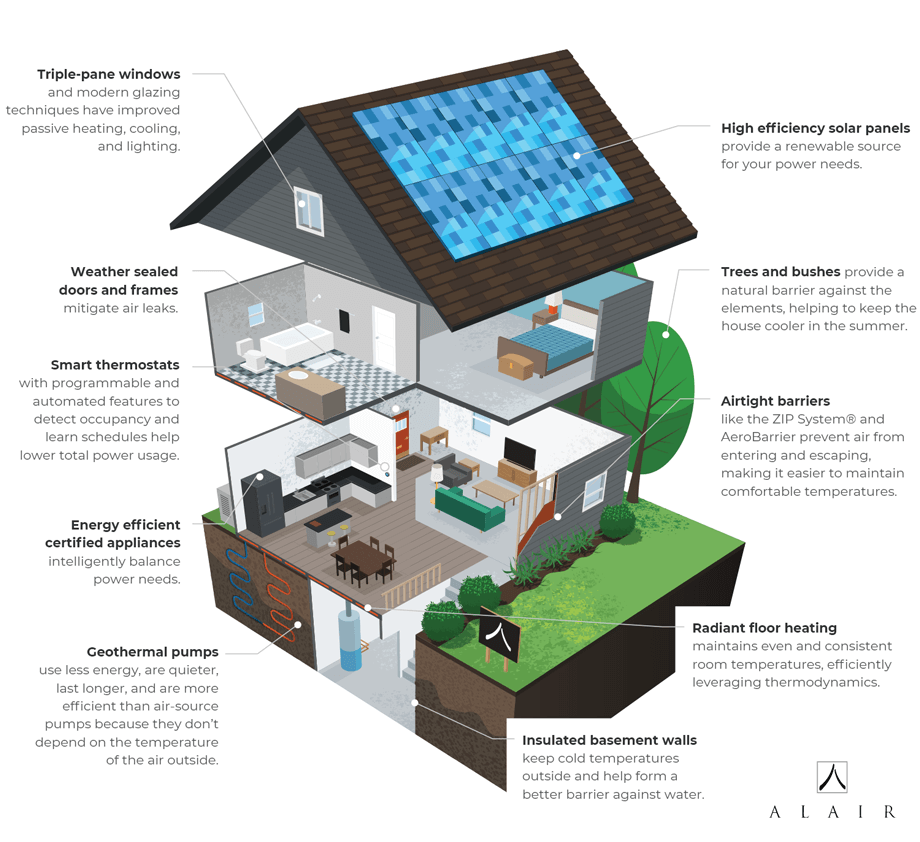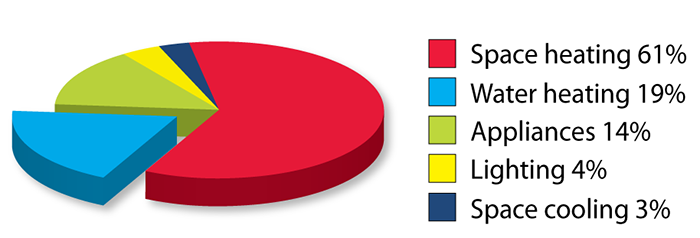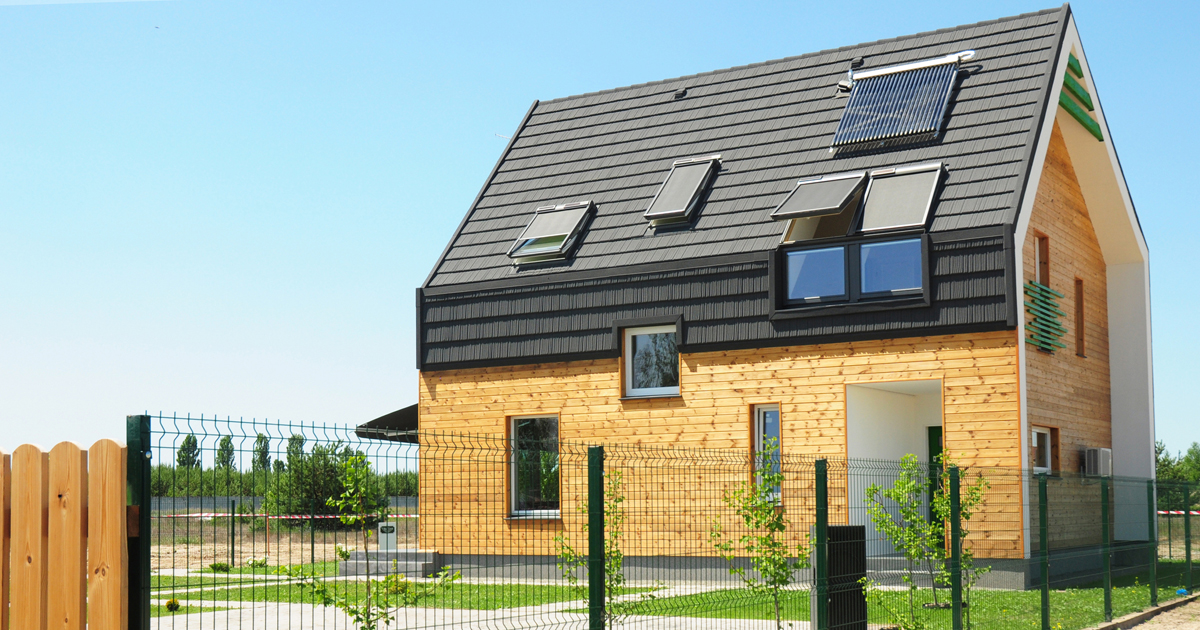Whenever I talk about energy efficiency and net zero buildings I like to bring up this idea that it’s easier and more cost-effective to save a watt than it is to make a watt. In that sense, it’s a bit like working on a budget for your personal finances; if you’re looking to save more money each month you probably first think about just trying to make more. And then you realize if you can spend less you can achieve the same goal without adding the additional work. A net zero home follows a similar line of thinking. Instead of adding the largest array of solar panels the roof can handle and adding in wind generation to produce the most electricity you possibly can, we use a combination of energy efficient technologies and renewable production for the greatest benefit.
What is a net zero energy home?

Simply put, a Net Zero Energy home (NZE) produces approximately the same amount of electricity that it uses monthly or annually. These types of homes are also called zero energy or net zero buildings and have 2 key components; the first, and often what many people consider the only difference between NZE and the homes we have been building for centuries, is producing renewable energy on-site. The second, and most important, is having an energy efficient home that lowers the overall power cost required by your day-to-day needs.
How does net zero home construction differ?
With NZE, the focus really is on reducing the amount of energy the house requires for you to live comfortably without significantly impacting your daily routine. If you were to do a side-by-side comparison the biggest difference you would see are the improvements to the thermal envelope, which is a reference to the way we seal the house to be more air tight and increase the efficiency of insulation.
Then we address the mechanical system needs with a goal of reducing loads and capacity requirements, which is another difference. Since we have improved the thermal envelope and we have much less air freely entering or escaping the house, we can scale down the size of your HVAC, generally the largest source of power use.
Finally, with all the predictable energy uses addressed and minimized we determine optimal power production. We also consider future needs and power storage solutions. And that’s it, at least at a very high level. Let’s dive a little deeper now and talk about the specifics.
How can you create an airtight house?
One of the best methods to build an energy efficient house is to create an airtight barrier. New technology has allowed us to combine exterior water, air, and thermal insulators into a wall assembly. Take a look at the video below from ZIP System.
Instead of your standard oriented strand board (OSB) that then has to be covered with house wrap, the ZIP System has combined the two elements. They utilize a more dimensionally stable OSB (higher resin content) with a facer or lamina, an ultra-fine screen that has been impregnated with green latex paint, and added insulation–all in a single panel. I know I sound like a salesman but this is an incredible product that has helped push the limits of energy efficiency.
To take it one step further, we use AeroBarrier to fill any tiny gaps in your building envelope where air will pass. This sealing process targets leaks in floor and wall joints, rough pipe openings, behind electrical housing, and within door headers. The method for applying the sealant is quite incredible; instead of trying to find and caulk the leaks we pressurize the interior of the home and then spray in the sealant. Because the area is under pressure, the AeroBarrier finds all the gaps where air is leaking and accumulates across the surface. Using this technique we can find and seal leaks as small as a human hair and up to ½ inch openings.
All this work to seal and insulate a home isn’t just about saving on energy costs. Taped seams, spray-in foam, aerosolized sealant…these all double as excellent soundproofing. Not only that, these systems also help prevent odors and particulates from entering your home. Overall, these things make for a more comfortable home with the added benefit of lowering your energy needs, yearly costs and maintenance.
Energy Efficient HVAC
As I mentioned earlier, heating and cooling your home generally uses the most energy so we have some of the greatest gains to make. And although Energy Star certified systems have helped improve your typical forced air heat pump system, I want to focus on what’s required to achieve NZE and what that realistically looks like. Based on my experience, the best method to get there is by utilizing either a ductless heating and cooling system or a geothermal heat pump.
What is a ductless heating and cooling system?

Source: nrcan.gc.ca
This is a wall-mounted system that uses and air-source pump to draw heat from the outside when the weather is cold, and drives heat out from the inside when the weather is hot. The indoor unit, that blows either hot or cold air into the house, is connected to an outdoor unit by lines carrying refrigerant. That refrigerant is used to exchange heat and provide the heating or cooling you need. Like the name implies, this is a ductless system and only requires an approximately three-inch hole in the outer wall. However, being ductless also means you need multiple indoor units if you want more than one source of heating and cooling. Which isn’t too big of a draw back though, because multiple indoor units can be attached to a single outdoor unit.
What is a geothermal pump and how does it heat or cool your home?

Image source: NC Sustainable Energy Association
Geothermal heat pumps utilize the relatively constant and stable temperatures underground to exchange heat. “A ground-source heat pump uses the earth or ground water or both as the sources of heat in the winter, and as the “sink” for heat removed from the home in the summer. For this reason, ground-source heat pump systems have come to be known as earth-energy systems (EESs). Heat is removed from the earth by using a liquid, such as ground water or an antifreeze solution; the liquid’s temperature is raised by the heat pump; and the heat is transferred to indoor air. During summer months, the process is reversed: heat is taken from indoor air and transferred to the earth by the ground water or antifreeze solution.”
So how effective is this method? “Ground-source heat pumps are among the most efficient technologies available and a cornerstone to achieving net zero energy building,” Mark Stimson of Bosch Thermotechnology said. “Using the ground as the thermal heat exchanger is the most effective way to heat and cool a building.”
Ductless heating and cooling vs geothermal pumps
Let’s put this comparison into the context of dollars and savings. According to the Ontario Energy Report, the average Ontario household uses about 9,500 kWh of electricity per year. To break that down further, space heating and cooling accounts for 64% (note that heating requires significantly more than cooling).

Source: nrcan.gc.ca
By using a geothermal heat pump, homeowners use approximately 45% less energy on heating and cooling, an average savings of $600 to $1,200 annually. Alternatively, ductless heating and cooling require approximately 60% less energy, an average of $800 to $1,400 annually.
These methods of heating and cooling have an incredible impact on reducing the overall energy needs of a house. And the combination of addressing all the mechanical systems to be more energy efficient reduces the overall size of energy production you need because everything works together. You’ll also find that a net zero home is quieter, more durable, and needs less maintenance because you’re putting less stress on the whole system.
Integrating renewable resources and methods into your home
The most common renewable energy source for your home is from solar panels and the good news is this technology has been improving each year, becoming both more efficient and cost-effective. Plus, federal and provincial incentive programs help make solar even more attractive. For example, the net metering program in Ontario which allows you to ‘bank’ extra energy produced during peak hours so that you can use that during times your panels aren’t producing, like overnight. It also works for when you need more electricity than your panels are producing.
So how much solar power do you need to produce to cover your day-to-day use? We answered this question earlier but to save you from scrolling the annual average usage is 9,500 kWh, or about 800 kWh per month. To produce enough energy to cover those needs you are looking at an approximately 8kW system, with the average solar panel cost being about $2.3 per watt (remember there are 1000 watts in 1 kilowatt).
With a system this size, and still using that average consumption, you are often going to produce more energy than you need. So you can either use a net metering program, or you can utilize a storage system like the Tesla Powerwall, giving you seamless backup power whether or not your panels are producing or the grid is down. One of the advantages of Tesla’s system is how technologically advanced it is while still being incredibly easy to use. “[The] Powerwall detects grid outages and automatically becomes your home’s main energy source.” Plus, with their mobile app you can monitor current production, use, and how much power you have stored all from your phone. Of all the solar systems we have installed, we get the most feedback from the clients that integrate a Powerwall, and it has been overwhelmingly positive.
Check out a recent energy efficient custom home project we did that included a comprehensive home automation system with a Tesla EV charger and Powerwall:

What is the cost of a net zero energy home
A build that utilizes a combination of these components will generally add about 7-10% onto your price. Don’t let that number discourage you because with your yearly cost savings you will recoup that money. The Rocky Mountain Institute performed a study of the economics of zero-energy homes and found the payoff threshold to be approximately 12 years. “This threshold compares the incremental cost to build a ZE and ZER home (compared with an identical home that meets local energy code) with the net-present value of the anticipated energy savings over the typical length a homeowner is expected to stay in the home (which is 12 years)” At which point, these energy efficiencies built into your home are putting money back in your pocket by saving you annually on power costs, maintenance, and general upkeep.
